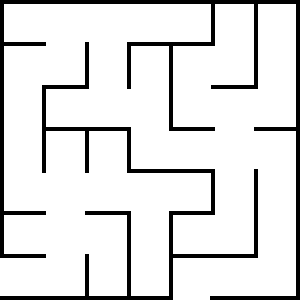Down through the ages there have been various imaginations about ‘what is imagination?’ One of the more interesting is by Samuel Coleridge (1772–1834), the 19th century poet famous for “The Rime of the Ancient Mariner,” and “Kubla Khan”.
Coleridge said there were three types of imagination.[efn_note]Coleridge, Samuel Taylor, and H. J. Jackson. Samuel Taylor Coleridge – the Major Works. Oxford University Press, 2008; ISBN 978-0199537914; Amazon; Biographia Literaria, ch. 4 and 13[/efn_note] One, which he called ‘fancy’ is the least important: it’s when we arbitrarily combine images, as in ‘a blue lobster’. Such imaginings may be entertaining, but they don’t require any effort, and don’t really accomplish anything.
The next is ‘Primary Imagination’. This is where we combine our raw sensory input into a coherent ‘imagination’ of the world. Our minds take raw input from sight, sound, feeling, etc., and combine them into an integrated model in our minds of what the world is around us. (By the way, there are definitely more than five senses: two additional ones would be our kinesthetic sense — that I know where my hand is relative to the rest of my body even with my eyes closed. And our sense of gravity — thanks to my inner ear I know which way ‘down’ is.)
This model in our minds is not “how it really is”, it’s a product of our imagination. For example, our eyes only contain receptors for red, green and blue, and our imagination fabricates all the other colors of the rainbow from that limited raw sensory input. (BTW, this is how color TV’s work — at each dot on the screen there is a red, a green and a blue phosphor designed to match the frequencies of the corresponding receptors of our eyes. This is also how ‘additive color theory’ works. See this article.) In essence we overlay this imagination in our minds onto the raw sensory input we are receiving. This is one of the great tasks of infancy — to learn how to orchestrate and integrate the disparate channels of sensory input: sight, touch, kinesthetic, gravity — into an integrated experience of reaching out and picking up a yellow ball. (Remember, ‘yellow’ is a fabrication of our imagination!)
This engine of primary imagination operates automatically in our waking hours (and perhaps that’s what dreams are: that engine just keeps running; and sometimes it takes as input emotions and experiences we are processing). Primary Imagination is an automatic process much like the breathing — over which we have little control at best.
From this point of view, the question “where does ‘reality’ leave off and ‘imagination’ begin” is an interesting question!
Finally, Coleridge says we also have Secondary Imagination. The Secondary Imagination makes artistic and scientific creation possible. It requires an effort of the will and conscious effort. It works on what we perceive by the Primary Imagination. It selects and orders the raw materials and reshapes and remodels them into objects of beauty (artistic, scientific, etc.). It is the power which reveals itself in the integration and reconciliation of seeming opposite or unrelated qualities and Coleridge calls it a magical synthetic power. It fuses the various faculties of the soul, subjective with objective, the human mind with external nature, the spiritual with the physical or material.
Instead of calling it, “secondary imagination” which isn’t very descriptive, I’ll call it “Contemplative Imagination” or “Imaginal Contemplation” when that is helpful, because it involves the deliberate contemplation and imagination of ideas and images.
Two examples for your consideration:
When Einstein (1879-1955) was 16 years old, his imagination was captured by the question “What would the world look like if you could ride on a beam of light?” For ten years he combined a disciplined and relentless imaginal contemplation of this question with his knowledge of physics, and the result was Special Relativity in 1905.[efn_note]The 1905 paper can be found in: Einstein, Albert et al. The Principle of Relativity. Dover, 1952; ISBN 978-0486600819; Amazon.[/efn_note]
During a long convalescence from battle wounds (a cannonball ricocheted off of a stone wall and shattered his leg), Ignatius of Loyola (1491-1556) worked out what we now call “Imaginative Prayer” (in his book Spiritual Exercises — considered a classic of Christian literature).[efn_note]Nicolas, Antonio T. de. Powers of Imagining: Ignatius of Loyola. State University of New York, 1986; ISBN 978-0887061103; Amazon[/efn_note] Contemplative prayer is especially suited to the Gospels: imagine a scene from a Gospel story. Visualize the event as if you are actually there, invoking all the senses: sights, sounds, tastes, smells, and feelings of the event. Place yourself in the scene. Spend time there.
According to Ignatius, contemplating a Gospel scene is not simply remembering it or going back in time. Through the act of imaginal contemplation, the Holy Spirit makes present a mystery of Jesus’ life in a way that is meaningful for you now.
I wonder if part of the efficacy of this is that it displaces the default junk in our minds that we receive from the media, etc., with a more spiritual point of view. And focused imaginal contemplation is necessary for that to have enough ‘hold’ or ‘grip’ to withstand the assaults of advertising, etc. And I’m sure there’s still more to it…
Regardless, a commitment to the discipline of Contemplative Imagination — and applying the results of that into the world — has real power to change both our outer and inner worlds.
